Beginner's Guide To Tomato Plants
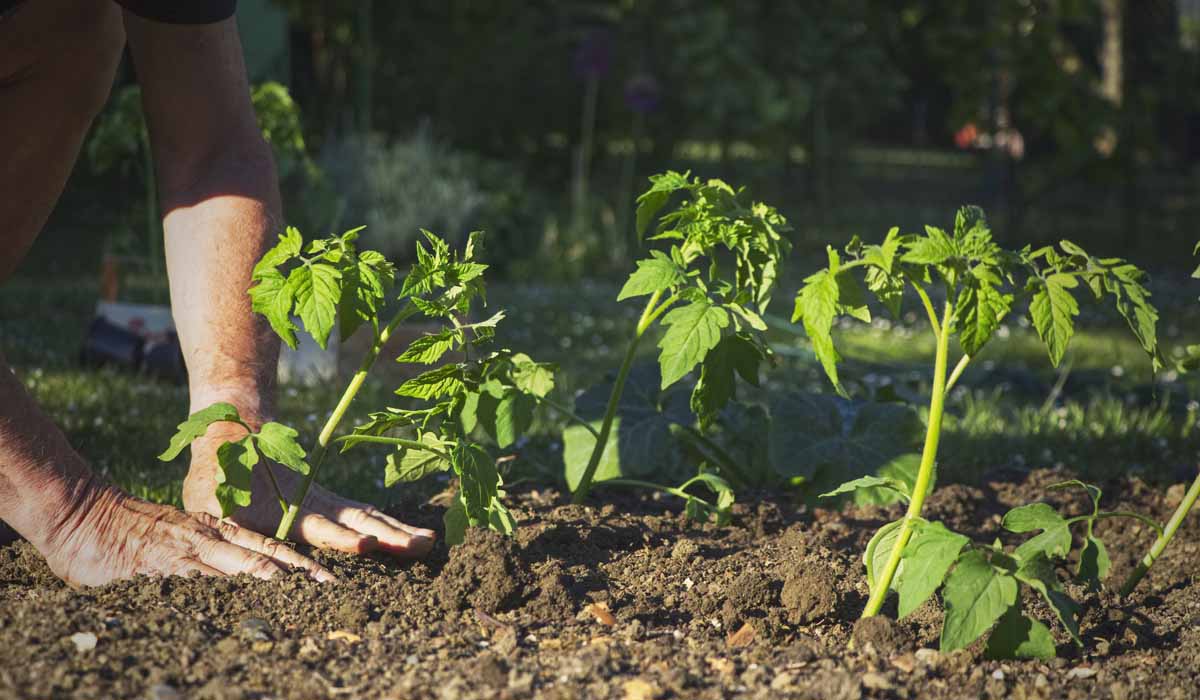
Contents

Tomatoes are a popular crop for many home gardeners. Growing tomatoes doesn’t have to be difficult, even as a beginner. We have put together our best tomato growing advice to ensure you have great success growing tomatoes.
While there is not a single secret that will help you grow tomatoes well, there are five key categories that you need to understand that will give you the best chance for a successful tomato crop.
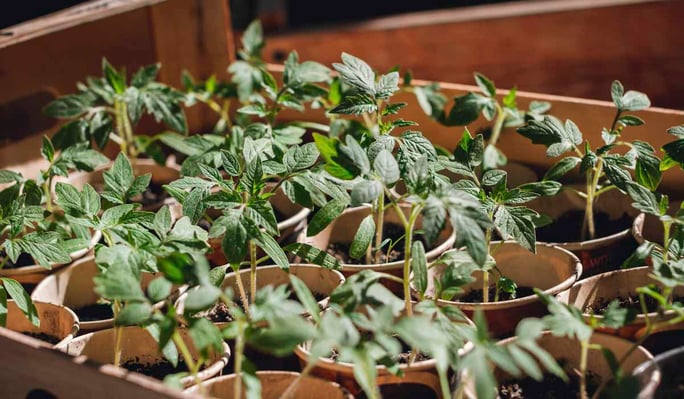
1. Tomato seed versus starter plant
As a new gardener it can be overwhelming to walk through a garden center and make decisions. Should you buy tomato seeds, tomato seedlings or purchase a more mature established starter plant? This all depends on timing and your growing region.
Here in Colorado, our frost-free date is typically around Mother’s Day. That is generally the time of year it's safe to begin planting into the ground. Tomatoes do not like cold weather whatsoever and they also don’t really enjoy extreme heat. Tomatoes will stop producing fruit when daytime temperatures are about 85F.
The ideal time to start seedlings in Colorado is in March indoors, and then transplanting them outdoors in the middle of May. The Colorado growing season is typically only about 157 days, and most tomato varieties take 70-90 days to produce fruit from a seedling. Starting tomatoes from seeds after June can be done but you likely won’t get fruit until August.
Starting tomatoes from an established starter or a mature plant can help give you fruit sooner. Most garden centers and big box stores carry healthy mature tomato plants that are ready to be transplanted into containers or the ground in your outdoor space. In Colorado, you will see an abundance of tomato plants available from the end of April through June.
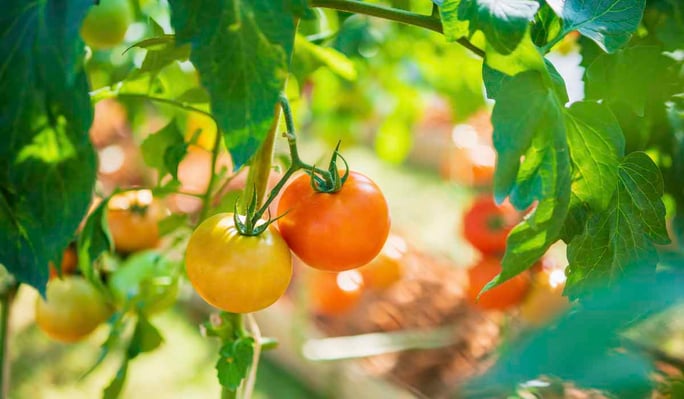
2. Choosing a tomato variety
There are two categories of tomato plants you need to take into consideration when selecting your tomato variety. Determinate and Indeterminate.
Determinate tomato varieties have a genetically predetermined size and level of production. They will have more of a bush shape and will typically produce and ripen all their fruit at the same time. Once the fruit has been produced, the plant dies back and will not produce anymore. This type is best for the gardener who is looking to do one large harvest and then preserve their tomato products.
Popular varieties of determinate tomatoes include Roma, San Marzano, Celebrity and Rutgers.
Indeterminate tomato varieties on the other hand have an undetermined size and level of production. It will be more vine-like and will grow in height until its pruned back.
Indeterminate varieties of tomatoes will also continue to set fruit for the season. This type of tomato plant is good for those interested in consistently eating their tomatoes, since they will grow and ripen throughout the season.
Popular varieties of indeterminate tomatoes include Early Girl, Beefsteak, Better Boy, Sungold and most cherry types.

3. Plant tomatoes correctly
How you plant your tomatoes can greatly impact the success of your plant. You want to plant them deep! Bury the stems of the tomato plants as deep as possible since they have the ability to grow roots from their stem. The more the stem is buried in the soil, the more roots your plant will produce. The bigger and deeper the root system, the better the plant is able to find the moisture and nutrients needed to grow a beautiful crop.
You can plant tomatoes in the ground or in large patio containers. Providing adequate support for tomato plants is critical but also can be challenging. Tomato cages can sometimes be too short and not support much weight. Stakes are a great way to add structure and support to a tomato plant but be mindful that they usually max out at 5-6 feet tall. Indeterminate plants could grow much bigger than that.
We recommend a combination of cages and stakes to support your plants.
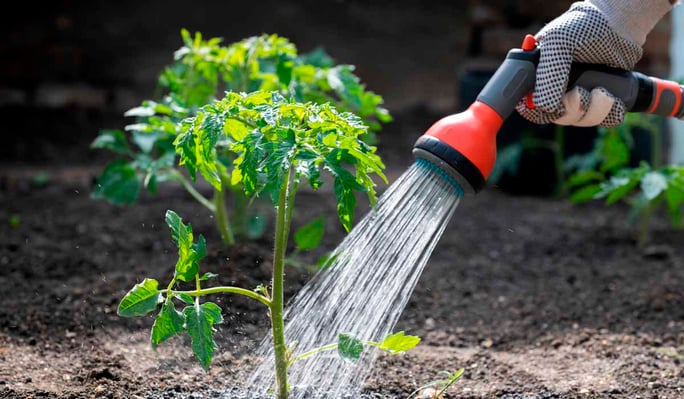
4. Basic needs of tomato plants
Tomato plants have three basic needs just like any other plant. Sunlight, water and nutrients. Tomatoes need a minimum of 4 hours of sun per day to produce ripe fruit. 6-8 hours of sun per day is suggested to bring out their best flavor. Your tomato plant will tell you if it’s getting too much sun by appearing wilted in the afternoon and sunburned leaves. Morning sun and afternoon shade is the most desired combination for tomato plants.
The water needs of your tomato plants will depend on if they are planted in the ground or in a container. Tomato plants grown in containers need more water than garden tomatoes because the soil in the container heats up faster which leads to more water evaporation. A good rule of thumb is to water your containers until water runs freely from the bottom. When soil feels dry 1 inch below the surface, its time to water again.
For tomato plants grown in the ground, be sure to water newly planted tomatoes well so the roots can extend deep. Early in the growing season, water plants every day, preferably in the morning. As the season continues, tomatoes usually require 1-2 inches of water per week.
Tomatoes need nutrients to continue to thrive and produce well. We recommend using compost, manure, or an all-purpose fertilizer on the plants continually through the growing season.
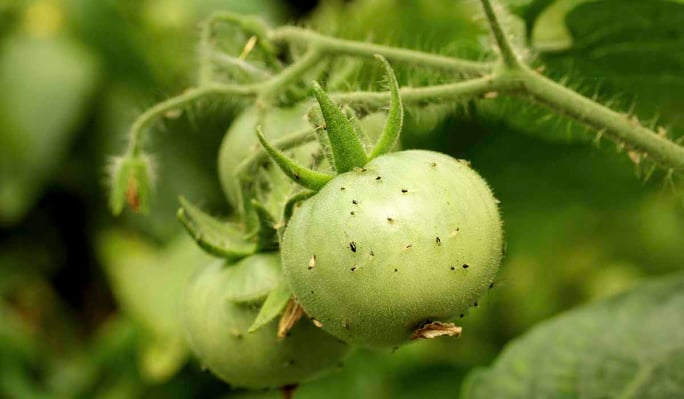
5. Pest management for tomato plants
There are several pests that like to eat your tomatoes. Pest management is important to keep pests at a minimum. Wire cages clipped around the plants will help deter animals from taking bites out of the tomatoes. Organic sprays like neem oil are great for most pests like flies, worms and aphids. It should be applied in the evenings to prevent burning the plant. Soapy water is also great to prevent a wide variety of pests. A mixture of 2 tablespoons dish soap into a gallon water can be sprayed over the plants.
Be sure to read our blog: 6 Common Garden Pests In Colorado
PRO TIP: Companion gardening with tomatoes is a great way to strengthen your tomato plant and improve the taste of your tomatoes. Herbs like basil, thyme, oregano, and rosemary are great to plant around the base of your tomato plant. Their fragrances can help deter pests, but they also release a chemical that improves the soil.
Be sure to read our blog: Why Is Companion Gardening So Good?
Growing tomatoes doesn’t have to be scary or hard. Follow these 5 steps this season and you will be on your way to growing a healthy, beautiful tomato crop!
Gardening Question?
Ask Our Experts and we'll get back to you!
